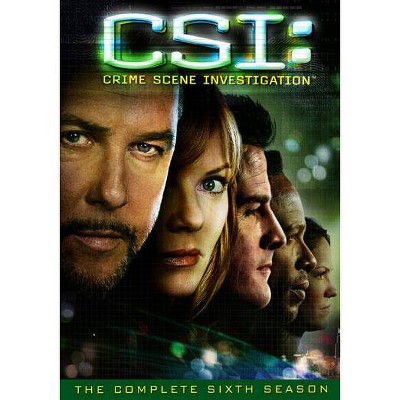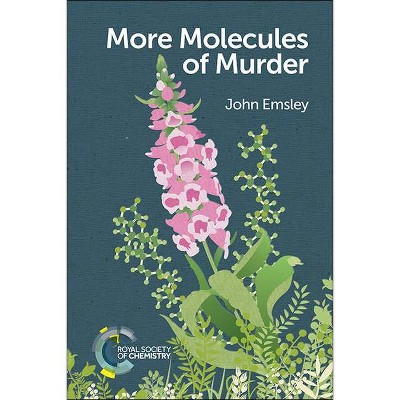Practical Crime Scene Processing and Investigation, Third Edition - (Practical Aspects of Criminal and Forensic Investigations) 3rd Edition

Similar Products
Products of same category from the store
AllProduct info
<p/><br></br><p><b> About the Book </b></p></br></br><p>Practice Crime Scene Processing and Investigation, Third Edition provides the essential tools for what crime scene investigators need to know, what they need to do, and how to do it. <b></b></p><p/><br></br><p><b> Book Synopsis </b></p></br></br><p>Every action performed by a crime scene investigator has an underlying purpose: to both recover evidence and capture scene context. It is imperative that crime scene investigators must understand their mandate--not only as an essential function of their job but because they have the immense responsibility and <i>duty</i> to do so.</p><p>Practice Crime Scene Processing and Investigation, Third Edition provides the essential tools for what crime scene investigators need to know, what they need to do, and how to do it. As professionals, any investigator's master is the truth and only the truth. Professional ethics demands an absolute adherence to this mandate. When investigators can effectively seek, collect, and preserve information and evidence from the crime scene to the justice system--doing so without any agenda beyond seeking the truth-- not only are they carrying out the essential function and duty of their job, it also increases the likelihood that the ultimate goal of true justice will be served. </p><p>Richly illustrated--with more than 415 figures, including over 300 color photographs--the Third Edition of this best-seller thoroughly addresses the role of the crime scene investigator in the context of: </p><ul> <p> </p> <li>Understanding the nature of physical evidence, including fingerprint, biological, trace, hair and fiber, impression, and other forms of evidence</li> <p> </p> <li>Assessing the scene, including search considerations and dealing with chemical and bioterror hazards</li> <p> </p> <li>Crime scene photography; scene sketching, mapping, and documentation; and the role of crime scene analysis and reconstruction</li> <p> </p> <li>Bloodstain pattern analysis and discussion of the body as a crime scene</li> <p> </p> <li>Special scene considerations, including fire, buried bodies, and entomological evidence</li> </ul><p>Coverage details the importance of maintaining objectivity, emphasizing that every action the crime scene investigator performs has an underlying purpose: to both recover evidence and capture scene context.</p><p>Key features: </p><ul> <p> </p> <li>Outlines the responsibilities of the responding officer, from documenting and securing the initial information to providing emergency care</li> <p> </p> <li>Includes three new chapters on light technology and crime scene processing techniques, recovering fingerprints, and castings</li> <p> </p> <li>Addresses emerging technology and new techniques in 3-D Laser scanning procedures in capturing a scene</li> <p> </p> <li>Provides a list of review questions at the end of each chapter</li> </ul><p>Practice Crime Scene Processing and Investigation, Third Edition includes practical, proven methods to be used at any crime scene to ensure that evidence is preserved, admissible in court, and persuasive.</p><p>Course ancillaries including PowerPoint(R) lecture slides and a Test Bank are available with qualified course adoption.</p><p/><br></br><p><b> About the Author </b></p></br></br><p><strong>Ross Martin Gardner</strong> worked in law enforcement for nearly 29 years. The vast majority of that period was spent with the U.S. Army Criminal Investigation Command, performing duties as a special agent and command sergeant major. In 1999, Ross retired from the military to take a position as a chief of police in a small suburban Atlanta police department. He served in that position until 2003, when he quit public service to become a full-time consultant and instructor. Ross is currently the vice president of Bevel, Gardner, and Associates, a forensic education and consulting group.</p><p>Ross holds a master's degree in computer and information systems management from Webster University, a Bachelor of Science degree in criminal justice from Wayland Baptist College, and an associate's degree in police science from Central Texas College. In 1985 he attended and graduated first in his class from the Scenes of Crime Officers Course, New Scotland Yard. Between 1988 and 1996 he served as an adjunct professor for Central Texas College. He is a member of a number of professional associations and has served in a variety of positions, including president of the Rocky Mountain Association of Bloodstain Pattern Analysts (RMABPA), president of the Association of Crime Scene Reconstruction (ACSR), chairman of the Education committee for both the RMABPA and the International Association of Bloodstain Pattern Analysts (IABPA), and chairman of the Taxonomy and Terminology Committee Scientific Workgroup on Bloodstain Pattern Analysis (SWGSTAIN). </p><p>Ross is certified as a senior crime scene analyst by the International Association for Identification and is an active instructor in crime scene processing, crime scene analysis, and bloodstain pattern analysis. Throughout his career he has taught for police agencies (national and international), police academies, law enforcement professional associations, and trial counsel professional associations, and has written a number of articles. He has qualified as an expert in bloodstain pattern analysis and crime scene analysis in both state and federal court. Ross co-wrote <i>Bloodstain Pattern Analysis: With an Introduction to Crime</i> <i>Scene Reconstruction</i>, 3rd edition, and <i>Practical Crime Scene Analysis and Reconstruction</i> with Captain Tom Bevel (Ret.), OKC PD. In 2007, Ross contributed a chapter to the <i>Wiley Forensic Encyclopedia</i>.</p><p>Donna Krouskup has been with the Denton County Police Department in Texas since 2004 and a Crime Scene Investigator since 2008. She holds a Bachelors of Arts in Chemistry from the University of North Texas and has extensive training and experience in various aspects of crime scenes investigation including: latent print development, sexual assault investigations, 3D laser scanners, digital imaging and video recovery, forensic photography, death investigation, shooting incident reconstruction, and bloodstain pattern analysis.. She is a member of both the International Association of Bloodstain Pattern Analysts (IABPA) and the Texas Division of the International Association for Identification (TXIAI). </p>
Price History
Price Archive shows prices from various stores, lets you see history and find the cheapest. There is no actual sale on the website. For all support, inquiry and suggestion messagescommunication@pricearchive.us




















